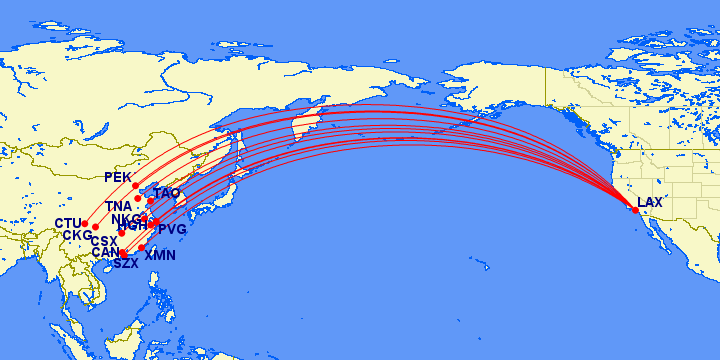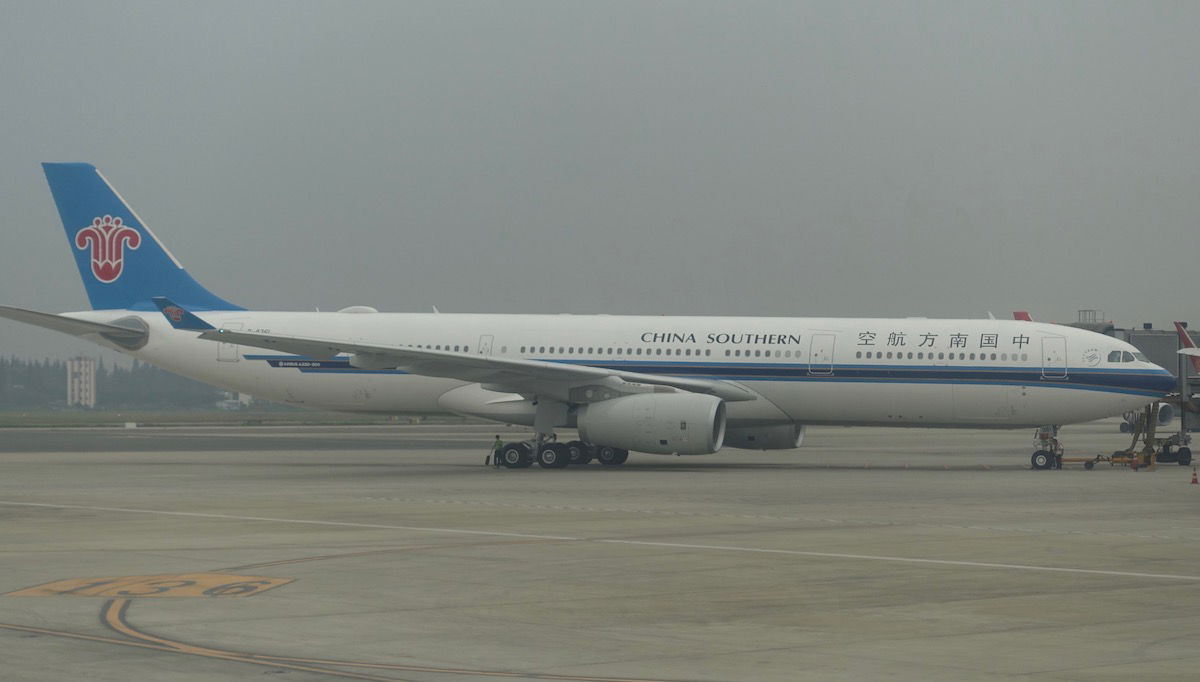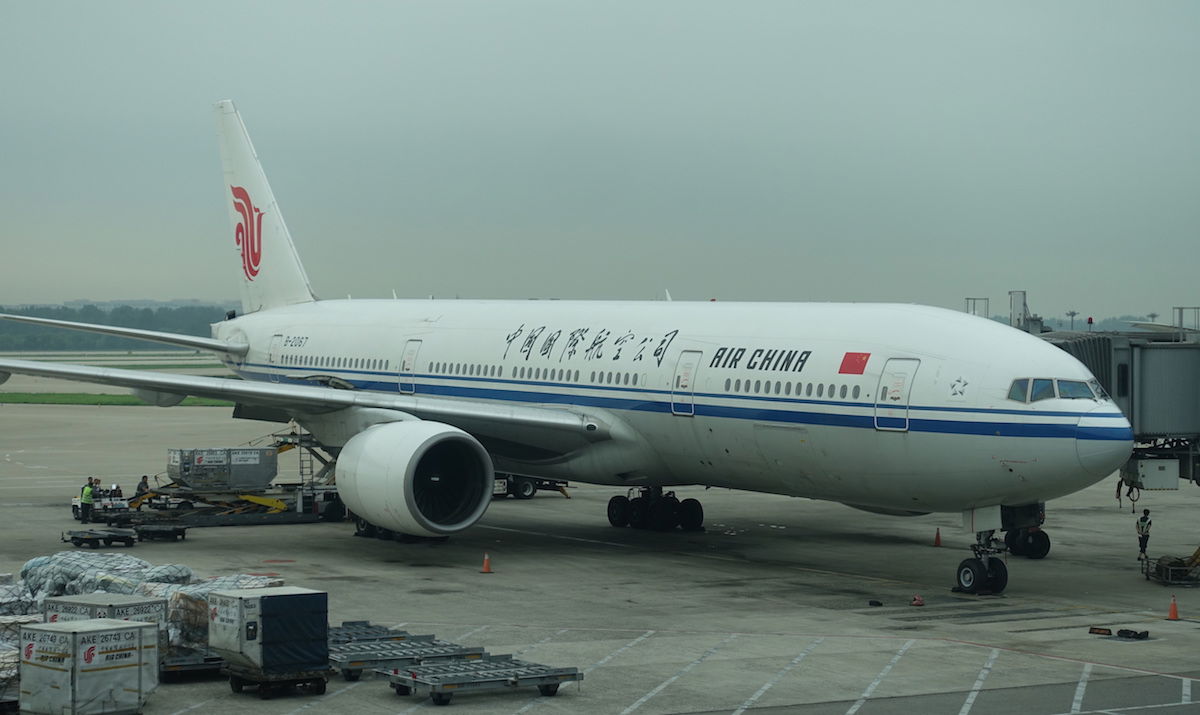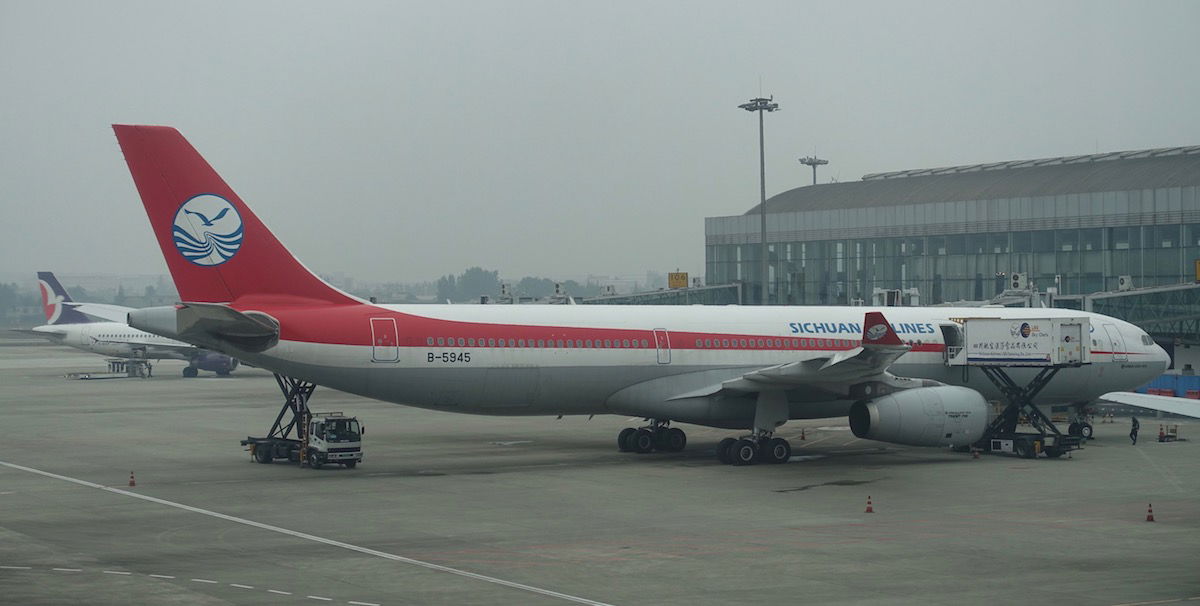Since 2009, China has had a “one route, one airline” policy. Under this rule, only one Chinese airline can operate each longhaul route. There are a few markets where there are exceptions (like Shanghai to Frankfurt), but in a vast majority of longhaul markets that policy exists. This is one of the reasons we’re seeing so much expansion between the US and smaller (as a relative matter) cities in China.
For example, even though Hainan is based in Beijing, a couple of years back they started flights between Los Angeles and Changsha. Why? Because Air China already flies between Los Angeles and Beijing. This is true in so many markets, and it’s why there are now a dozen nonstop destinations in mainland China from LAX, for example.

Last August I wrote about how the Civil Aviation Authority of China released a draft regulation that would open up some longhaul routes to more Chinese airlines, and would largely abolish the current regulations. That’s now one step closer to being in action.
Yesterday the CAAC said that their restrictive policy on which routes Chinese airlines can operate will be scaled back as of October 1, 2018. For countries with at least a partial open skies agreement (including the US), the policy will be abolished completely, while other longhaul destinations will still have some restrictions.
This is being done due to the changing aviation market in China, as well as the opening of the second international airport in Beijing in 2019. According to Reuters, here’s how flights will be distributed:
The revised rules were issued in draft form in August last year, and will become effective on Oct. 1 this year. They involve dividing international routes into two categories.
The first category will comprise unrestricted routes to destinations in countries with at least a partial open skies agreement with China, such as Australia, Thailand and the United States.
Long-haul destinations in the second category will be subject to certain restrictions.
China defines a long-haul route as one that requires flying over 4,500 kilometers (2,800 miles) one way.

Personally I’m happy about this change, though I can see both sides to this. The reason this policy was first adopted was because many Chinese airlines are government owned, so it’s silly for Chinese airlines to be competing head-to-head.
However, the end result with the current system has been that airlines have incredibly inefficient route networks that often require additional connections for passengers, since airlines can’t operate the flights they want.
Who are the winners and losers here? I’d say the winners are:
- The smaller Chinese airlines (those except Air China and China Eastern, since they’re based in Beijing and Shanghai and have fortress hubs there)
- Consumers in major markets, because we’ll see more competition

There are also quite a few losers, though:
- Foreign airlines, since they’ll potentially be going from competing with one Chinese airline in a market to potentially competing with multiple Chinese airlines in a market
- Those wanting to travel to/from smaller markets in China, since it’s likely we’ll see longhaul flights cut out of some of these markets
- Air China and China Eastern, since they have the most flights out of Beijing and Shanghai, and will suddenly have a lot more competition

Note that we still won’t necessarily see unrestricted flights between the US and China. Airlines still need slots for airports and in some cases city pairs due to the nature of the bilateral agreement, so they’re not totally opening up markets and letting airlines fly what they want.
However, I suspect over the next few years we’ll see a lot of the flights between secondary markets in China and the US cut, and replaced with flights out of Beijing’s new airport.
Something has to give with the current state of the Chinese aviation market, given the $500 roundtrip transpacific fares that they’re forcing other airlines to compete with.
What do you make of China scaling back this policy?





It's a good thing. I feel Air China need to improve their service a bit. Competition -> Lowe price and better products. Chinese airlines haven't just become "fly-able." Theyve become "desired" in my book. Hainan airlines is my fav. They are a 5 star airline with pretty good service and very competitive prices. FAs speak good English and are very professional. Chinese airlines in general outdo US airlines. Hainan is the best out of China....
It's a good thing. I feel Air China need to improve their service a bit. Competition -> Lowe price and better products. Chinese airlines haven't just become "fly-able." Theyve become "desired" in my book. Hainan airlines is my fav. They are a 5 star airline with pretty good service and very competitive prices. FAs speak good English and are very professional. Chinese airlines in general outdo US airlines. Hainan is the best out of China. Delta IMO is the best out of US.
@TProphet How's the load factor for SZX-SEA as you observe on that flight? Very curious. I think that route should be fine, Xiamen probably won't join the fight and will just let China Southern (its parent company) do it.
Well, the government may allow more route if the passengers stop throwing coins in the engine for "LUCK" :-)
Whilist not top-notch, Chinese carriers has come a long way and now have become flyable.
They may not be number one choice for non-Chinese passengers, but for the Chinese going abroad, ease of communication and a more familiar environment would definitely be a positive factor.
Non-Chinese passengers would still choose to fly other airlines but the growing Chinese market and outbound demand would be more than sufficient keep Chinese airlines flying& profitable.
I am actually on Xiamen's flight from Shenzhen to Seattle right now - with free inflight wifii. While surprisingly nice, this flight is likely to get cut, which is a shame. Xiamen could actually do pretty well with it. Part of the problem with Chinese airlines competing is that they just don't provide a culturally relevant or well-marketed service for Western people.
Alexis;
I flew YVR-PVG-BKK round trip on China Eastern in J
It was fine
One plane was brand new, 2 were average, one had wear and tear.
It’s odd that they don’t let you look at menu, but no biggie
Their English skills are pretty poor
But they tried hard to help. (Like getting me snack when I mimed it)
Food was pretty bad. Eat before you board!
It was heavy...
Alexis;
I flew YVR-PVG-BKK round trip on China Eastern in J
It was fine
One plane was brand new, 2 were average, one had wear and tear.
It’s odd that they don’t let you look at menu, but no biggie
Their English skills are pretty poor
But they tried hard to help. (Like getting me snack when I mimed it)
Food was pretty bad. Eat before you board!
It was heavy on seafood local dishes, like cold sea cucumber with some sort of tepid broth
But I thought it was fine, especially since it cost half of what some other carriers were charging
FWIW: I’m new to the J and F international scene, and am happy just to have seat lie flat
I don’t think foreign airlines should have too much to worry about as most, including Chinese passengers, would rather fly non Chinese carriers given a choice. Unless they flood the market with extremely cheap seats, it should be a battle really amongst the Chinese carriers.
Speaking of airlines in China, I think you should cover this news on Sichuan Airlines: https://edition.cnn.com/2018/05/15/asia/chinese-airline-accident-intl/index.html
The pilot is doing an amazing job.
Also, I doubt the competition will increase a lot immediately except for new PEK. New Beijing Airport will definitely encourage Skyteam members (CZ/MU) who move there to start new routes but for the rest second-tier routes as long as the performances are not too bad and the airlines are still receiving...
Speaking of airlines in China, I think you should cover this news on Sichuan Airlines: https://edition.cnn.com/2018/05/15/asia/chinese-airline-accident-intl/index.html
The pilot is doing an amazing job.
Also, I doubt the competition will increase a lot immediately except for new PEK. New Beijing Airport will definitely encourage Skyteam members (CZ/MU) who move there to start new routes but for the rest second-tier routes as long as the performances are not too bad and the airlines are still receiving subsidy from local government, they will probably keep it and earn profits from subsidy instead of fighting head to head.
CZ finally has a way to profitably run its A380! Let's hope to see them on routes like PEK new airport - SFO/LAX/JFK
@Alexis I actually enjoyed my MU flight from HNL-PVG in economy, I do suggest registering for wifi in advance and download a VPN that works against china's firewall as it was an issue for me
Most occasions when a government allows the market to dictate business decisions as opposed to arbitrary regulation, it's a win for consumers.
@Lucky - Hainan Airlines is actually based in Haikou, Hainan Province - hence the name. They have a huge HQ building and ops center there, and their main training academies are also in Hainan province - Haikou (engineering training JV with Lufthansa) and Sanya (pilot training + simulators).
Beijing happens to be the HQ for the HNA Group however and therefore a lot of commercial work for the airline takes place there, as well as...
@Lucky - Hainan Airlines is actually based in Haikou, Hainan Province - hence the name. They have a huge HQ building and ops center there, and their main training academies are also in Hainan province - Haikou (engineering training JV with Lufthansa) and Sanya (pilot training + simulators).
Beijing happens to be the HQ for the HNA Group however and therefore a lot of commercial work for the airline takes place there, as well as it being their biggest hub airport. But the airline ops team is very much linked to its Haikou roots.
I’m booked on China Eastern in August, is it as terrible as the internet is making it out to be?
@AsiaFlightExpert
China Southern DO have a base in Beijing and they wanted to have more ex Beijing international routes however they cannot do t due to this restriction
China Southern is based in Guangzhou, not in Beijing or Shanghai
Good for passengers.
What about China Southern? They have the largest fleet size in China.